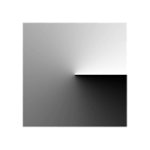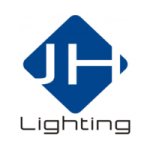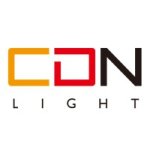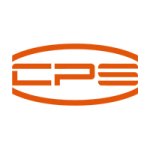Table of Contents Hide
- 1 Lighting Matters More Than You Think in Educational Facilities
- 2 The Learning Environment
-
3
Lighting Design Considerations
- 3.1 Illuminance uniformity
- 3.2 Luminance contrast
- 3.3 Color appearance
- 3.4 Glare
- 3.5 Flicker
- 3.6 Veiling reflections
- 3.7 Modeling of faces and objects
- 4 General Lighting
- 5 Lighting Technology
- 6 LED Light Fixtures
- 7 Color Rendering
- 8 The Science behind the Color of Light
- 9 Tunable White Lighting
- 10 Photobiological Safety

Lighting Matters More Than You Think in Educational Facilities
The role of lighting in knowledge acquisition and the process of learning is fundamental. It enables visual exploration of the physical characteristics of the study subjects as well as discovery of concepts from written and graphical displays on paper, computer, and projection. Lighting also sets the scene for listening, verbal communication, social skill development, and comprehension of situations. As a critical element of the design that greatly influences how well the space meets the needs of students and instructors, classroom lighting should support health, well-being, and performance by providing a comfortable, attractive environment for students and instructors. Beyond enhancing occupant satisfaction and supporting the educational experience within the illuminated space, lighting in schools and educational facilities should be delivered within tightening code constraints.The Learning Environment
Educational facilities range from primary (elementary) schools, middle schools, high schools, to universities and colleges. While these facilities have different types of spaces, what they all have in common is that the majority of learning and study activities take place in classrooms. A general-purpose classroom has a floor area of at least 32 square meters (350 sq.ft) and accommodates between 20 and 75 students. A typical classroom has a rectangular floor plan which allows better sightlines than a square plan. The teaching space is designed with sightlines parallel to windows that provide daylight (skylight) entry to the space and give sensory stimulation and visual contact with the outside world. Control media such as shades or blinds are used to reduce exterior luminance so that they're in balance with interior luminance, or to eliminate daylight when it is not needed. Side-lighting using daylight through windows provides general illumination for much of the school day. However, artificial lighting plays a key role when a balanced, consistent, and controllable visual environment is needed.The layout of a classroom is generally divided into a student zone and an educator zone. The student zone always requires general lighting, while the educator zone requires supplemental lighting for delivering vertical illuminance onto teaching boards and providing good modeling for the instructor's human features. The most common instructional tool in classrooms is teaching boards, which include dark gray and green chalkboards (blackboards) and dry-erase boards such as whiteboards and gray boards. Video screens for presentation of projected media are often used for computer instruction. This requires the illuminance on the projection screen to be minimized while the sufficient ambient light should be provided over the student zone for note-taking. A classroom may be a computerized environment where minimizing screen reflections of video display terminals (VDTs) will be the prime concern. Screen readability may be reduced by reflected images produced by luminaires, windows and surrounding high-luminance surfaces.
Lighting Design Considerations
Classroom lighting may be deemed of high quality if it enables students and instructors to accurately and comfortably perform visual tasks. The foundation of lighting design is to integrate human needs, architecture, and economics and the environment. The priority of classroom lighting is to satisfy human needs such as visibility, task performance, visual comfort, social communication, health, safety, and well-being. These various human needs must be properly balanced to cultivate a stimulating learning environment, while also taking economic, environmental and architectural considerations in account. Achieving quality lighting involves more than providing proper illuminances to make a given task visible. There are many factors that affect the ability of humans to see and perform tasks, the seven most important being glare, illuminance uniformity, luminance contrast, flicker, color appearance, modeling of faces and objects, and veiling reflections.Illuminance uniformity
Illuminance is the amount of light incident on a surface. The most common tasks and applications in classrooms require a desktop illuminance in the range of 150 lx to 250 lx. Uniform horizontal illuminance in the student zone eliminates shadows that affect task visibility and permits flexibility of space utilization during repositioning of task locations. In classrooms, particularly the educator zone, vertical illuminance and the illuminance at other planes between horizontal and vertical are also very important. The ratio of minimum illuminance to average illuminance over the task surface, e.g. horizontal illuminance on desktops and vertical illuminance on teaching boards should not be lower than 1:1.4.Luminance contrast
Luminance is the amount of light coming from a surface or point. It is a function of the surface illuminance and surface reflectance, which means luminance can be increased by increasing the amount of light striking a task surface or increasing the reflectivity of the surface. To maintain acceptable contrast for chalk marks, the chalkboard reflectance should be maintained within 5% to 20%. In comparison, a whiteboard require 70% reflectance in order to make itself a focus of attention. The reflectance of work surfaces (desktops) should fall within the 25% to 40% range so that a comfortable luminance balance can be achieved. Walls and ceilings usually come with light-colored matte finishes. They create inter-reflections of light that can assure efficient utilization of light for improved horizontal and vertical illuminance while minimizing reflected glare. The human eye responds to luminance, not illuminance. It is luminance that leads to the sensation of brightness. The ability to see detail is strongly influenced by the relationship between the luminance of an object and its immediate background. Appropriate contrast between the task detail and its background may create visual interest and provide visual cues. However, luminance variations that are too great will create adaptation difficulties and visual discomfort. The upper limit on luminance ratio between a task and immediate surroundings is 3:1 (darker surroundings) or 1:3 (lighter surroundings).Color appearance
Color is a critical element of lighting. It has an integral relationship with light in terms of visual, emotional and biological effects. The extent to which visual performance, mood, atmosphere, health, and well-being are affected by light depends on the spectral power distribution (SPD) of light emitted by a light source. A light source can be characterized by its color temperature and by its color rendering performance, which are both determined by the SPD. The color appearance of objects that are not self-luminous is a product of the interaction between the light source's SPD and the spectral reflectance function of objects. Certain classrooms may require lighting that renders colors accurately. Color rendition is just one aspect of lighting. It is more important to look at a spectral power distribution of light and intuitively understand how the color of light will influence behavior, satisfaction, psychological responses, and health. The color of light sources—whether it’s "warm" or "cool" in appearance has tremendous effects on human health, productivity and well-being.Glare
Glare occurs when luminances, or luminance ratios, are excessively higher than the luminances or luminance ratio to which the eyes are adapted. The consequences of glare include disability (reduction in visibility and visual performance) and discomfort (unpleasant sensation of brightness that does not necessarily interfere with visual performance or visibility). Glare may be resulted from light reaching the eye directly from a light source (direct glare) or caused by reflections of high luminance from a reflective surface (reflected glare). Overhead light fixtures may be assigned a Unified Glare Rating (UGR) or Visual Comfort Probability (VCP) for predicting discomfort glare in interior applications. A maximum UGR of 19 or a minimum VCP of 70 is considered as acceptable for reading, writing, and computer-based tasks. When a higher level of visual comfort is desired, luminaires with a UGR of 16 or a VCP of 80 should be selected.Flicker
Flicker is amplitude modulation of light that is distracting and has a number of negative consequences. Both fluorescent and LED luminaires that are operated by poor quality power supplies can produce at twice the powerline frequency (i.e., 120 Hz or 100 Hz). Flicker is generally noticeable at frequencies higher than 70 Hz. However, flicker that is not noticeable to the human eye can still produce a nervous system response. Both visible and imperceptible flicker are of concern. Varying from person to person, exposure to flicker may cause eyestrain, malaise, nausea, reduced visual performance, panic attacks, headaches, migraines, epileptic seizures, and evidence of aggravating autistic conditions. In educational facilities where children or young people stay for a long period each day, stringent flicker control should be exercised. The percent flicker should preferably not exceed 4% at 120 Hz or 3% at 100 Hz, which is extremely safe for all populations. The maximum allowed value 10% at 120 Hz or 8% at 100 Hz.Veiling reflections
Veiling reflections are high luminance patches (bright images of a light source) reflected by specular surfaces such as computer screens or glossy reading materials. Veiling reflections from either primary light sources (widows or luminaires) or secondary light sources (reflected) reduce contrast of a task and obscures detail. To ensure no light sources creating specular or diffuse reflection into a person's eyes, arrange computer screens in a position perpendicularly to the light source, or specify a luminaire with a light distribution that has minimal light emitted at problem angles.Modeling of faces and objects
Facial and object modeling is an important lighting consideration in educational facilities. The interplay of light and shadow on a face can aid teacher-student communication by making lips easier to read and facial gesture easier to interpret. Lighting can add shape and depth to a visual scene, reveal texture and detail of objects, create a desirable pattern and bring out highlights and visual interests. Strong directional lighting may cause unflattering deep shadowing, whereas extremely diffused lighting makes faces or objects appear flat or uninteresting. A proper mix of directional and diffuse lighting is therefore desirable.General Lighting
General lighting is the main source of illumination in classrooms. It provides the space with overall illumination while also serving as the primary source of task lighting. General lighting in classrooms may be accomplished by using ceiling-mounted lighting systems with a direct, indirect or combination direct/indirect distribution. Direct lighting delivers uninterrupted light from the luminaire to a horizontal task plane. Indirect lighting distributes light towards a ceiling, which in turn reflects light downward. Direct/indirect lighting provides both downward and upward light distributions. Direct lighting systems are efficient in delivering light, but can create harsh shadows, veiling reflections, and undesirable visual effects such as dark ceilings and scallops on upper wall surfaces. With illumination directed at ceilings, indirect lighting systems evenly distribute light to excessively luminance in the field of view. Indirect lighting, however, makes a space appear dull and empty of highlights and visual interests. Direct/indirect lighting combines the benefits of direct and indirect lighting to provide balanced light distributions for improved visual comfort, uniform illuminance on horizontal task surfaces, and reinforced impressions of space, alertness and visual clarity.Despite the concern of producing glare and cave effect, direct lighting is almost a universal choice in classrooms simply because most educational spaces have a low ceiling height. Direct lighting is typically provided in the form of recessed lighting, flush mount lighting or suspension lighting. Direct lighting fixtures may be designed in various shapes and sizes. In educational facilities, light fixtures in common use are rectangular troffers designed for installation in grid ceilings and linear lighting fixtures designed for recessed, surface mount and flush mount installations. Troffers are available in the form of volumetric troffers, parabolic troffers, diffused/lensed troffers, and edge-lit LED panels. Linear light fixtures come in standard length sections, such as 4, 8 or 12 foot sections, or in a continuous run configuration.

Lighting Technology
For the past several decades lighting of classrooms and other educational spaces had been an almost exclusive province of fluorescent lighting technology. A fluorescent lamp uses electricity to excite mercury vapors within a glass tube. The mercury vapor discharges to emit ultraviolet (UV) light which then causes a phosphor coating to fluoresce, producing light in the visible spectrum. Fluorescent lamps gained widespread usage because of their high luminous efficacy, diffused luminous distribution, and long operating life. The use of fluorescent lamps, however, is controversial. Fluorescent lamps have many disadvantages such as ultraviolet emission, long start-up time, radio interference, high fragility, harmonic distortions, limited range of operating temperatures, and reduced lifespan due to frequent switching. Nevertheless, the most negative impact of fluorescent lighting is that it significantly drove down the quality of interior lighting and posed health risks. An inordinate amount of focus on luminous efficacy caused the majority of fluorescent light fixtures to perform poorly in color reproduction and deliver an excessively high color temperature (6000 K - 6500 K) that could have a disruptive effect on the human circadian rhythm and raised the concern of blue light hazard. Because a fluorescent lamp requires a ballast to regulate the current delivered via the electrodes of the lamp, the problem of flicker arises. When it comes to light quality, fluorescent lighting is a particularly bad start in the history of artificial lighting for interior spaces.Solid state lighting based on light emitting diode (LED) technology is rapidly gaining popularity. LEDs have become the predominant light source for every lighting application imaginable. An LED is a semiconductor device which converts electrical energy directly into photons. The semiconductor device has a p-n junction formed by oppositely doped layers of a semiconductor material such as indium gallium nitride (InGaN). When the p-n junction is biased in the forward direction, electrons and holes are injected into the active region and recombine to generate light. LED technology addressed many of the drawbacks of conventional technologies and offers the promise of high efficiency, long life, high spectral versatility, exceptional controllability (on/off/dim), high flexibility in optical design, and high resistance to shock and vibration. LEDs produce radiant power only in the visible spectrum (typically from 400 to 700 nm). Absence of ultraviolet (UV) and infrared (IR) radiation makes this technology particularly well-suited for use by people with a specific sensitivity or in situations where the optical radiation from traditional light sources would pose risks to humans.
LED Light Fixtures
Long service life and high energy efficiency are the hallmark advantages of LEDs. This leads to a common misconception that the long lifespan and high luminous efficacy of LED lighting systems are a matter of course. A fluorescent luminaire utilizes a set of lamps, e.g., the linear T5 (5/8 inch diameter), T8 (1 inch diameter), and the T12 (11/2 inch diameter), standardized throughout the industry and across manufacturers with similar lifetimes, light outputs and lumen maintenance. The fixture basically serves as the mounting frame for the lamps and provides limited control of light distribution. In contrast, an LED luminaire is generally a highly engineered system that holistically integrates LEDs with thermal, electrical, and optical sub-systems to provide an acceptable product. The system efficacy and operational life of an LED luminaire are dependent largely on system design and construction. The life rating of an LED luminaire is based on the first time the luminaire requires maintenance, which would likely be due to lumen deprecation, color shift, malfunction or even abrupt failures of LED drivers.LEDs are the most efficient light source available today. However, still more than half of the electrical power fed to LEDs is converted into heat. Unlike incandescent and halogen lamps which radiate heat out of the lamps in the form of infrared energy, heat generated by LEDs is trapped within the semiconductor packages and must be dissipated through the luminaire itself. Excess heat buildup within the LEDs can accelerate the degradation process of the chip, phosphor, and packaging materials. Elevated junction temperatures have been shown to cause many failure mechanisms such as nucleation and growth of dislocations in the active region of the diode, degradation in phosphor quantum efficiency, and discoloration of encapsulant and plastic housings. Hence, effective thermal management is crucial to operating LEDs to their rated service life. Thermal design is the most important part of luminaire design. All of the materials and components in the thermal path from the semiconductor die through the printed circuit board (PCB) to the ambient environment must have low thermal resistance. The effectiveness of a thermal design essentially depends on the ability of the heat sink to dissipate heat through thermal conduction and convection. Overhead light fixtures such as troffers and linear pendants typically provide sufficient volume for creating adequate surface area that facilitates heat exchange.
More often than not, the point of failure or malfunction in an LED system is the LED driver. As LEDs are sensitive to even very small changes in current and voltage, the LED driver circuits must be configured to regulate the output at a constant current under supply voltage or load variations. Operating LEDs with a proper drive current is also a part of thermal management. Overdriving what an LED is rated for will increase junction temperature and reduce internal quantum efficiency of LEDs. The key performance metrics of drivers focus on their ability to regulate the power to an LED or a string (or strings) of LEDs appropriately and efficiently, while delivering high power factor and a low total harmonic distortion (THD) over a wide input voltage range. The driver must also provide protection features against overload, open- and short-circuit conditions, as well as transient voltage suppression and intelligent over-temperature protection. However, some lighting manufacturers cut costs relentlessly by underdesigning the driver circuits. This not only causes the reliability of the driver circuit to be compromised, but also makes flicker an issue because low cost drivers often provide incomplete ripple suppression. It is generally unacceptable that the ripple value of output current exceeds ±10%.
Optical design becomes a high priority in the design of LED systems. Uniform illuminance over a large area or task plane calls for the use of a large number of mid-power LEDs. The high intensity output of these miniature light sources makes glare mitigation a precedence. LED luminaires come in a variety of distribution characteristics which are achieved using optical components such as diffusers, lenses, reflectors, and louvers. Direct glare from LEDs could be mitigated by diffusing brightness over large surface areas. Lenses that incorporate a series of small prisms can reduce the luminance of the luminaire at viewing angles near horizontal. Reflection is a commonly used technique for regulating luminous flux from LEDs. Volumetric troffers are a type of "reflected direct" luminaires that reflect light off the inner surface of a recessed housing, while the LED modules that emit light upward are shielded or obscured in metal baskets backed with diffuse acrylic. Edge-lit LED panel lights inject light into a light guide plate (LGP) which then distributes light evenly towards a diffuser through total internal reflection (TIR). The ability to deliver uniform illumination without creating excessively high luminance makes these recessed luminaires a workhorse in educational facilities.
Color Rendering
As with fluorescent lighting, the tradeoff between color quality and luminous efficacy has remained in the era of LED lighting. White LEDs are usually phosphor-converted LEDs that utilize short wavelength light emitted from LED dies to pump phosphors (luminescent materials). Most phosphor-converted LEDs are blue pump LEDs that partially converts the electroluminescence. A high color rendering blue pump LED requires a very large portion of emitted short wavelength light to be down-converted. This process of converting pump light into phosphor light (photoluminescence) involves a large amount of Stokes energy loss. Conversion of luminous efficacy of radiation (LER) by the eye sensitivity is inefficient over the spectral distribution of longer wavelength light. When compounding these effects, the luminous efficacy of high color rendering LEDs which have an SPD more uniformly spread throughout the visible spectrum is relatively low than low color rendering LEDs that are over-saturated in the blue and green wavelengths.As a result of edging towards high efficacy lighting and driving down costs, most LED luminaires used in educational facilities incorporate LEDs with a color rendering index (CRI) of 80, which is acceptable (but far from good). In particular, light emitted from these luminaires is deficient in wavelengths that render saturated colors. For a classroom to have a pleasant feel and for colors to appear natural, the light source must be capable of triggering visual response to all wavelengths in the visible spectrum. Educational facilities deserve lighting with a high color quality, e.g. a CRI of 90. While blue pump LEDs can be designed to provide superior color rendition, violet pump LEDs have been developed specifically to produce broad-spectrum white light that delivers radiant power fairly broadly across the visible spectrum.

The Science behind the Color of Light
The correlated color temperature (CCT) of a light source is intended to characterize the color of light (e.g., warm or cool). White light exhibiting a warm tone has a CCT in the 2700 K to 3200 K range. White light with a CCT in the range of 3500 K to 4100 K is commonly referred to as having a "neutral white" appearance. White light with a CCT above 4100 K is referred to as having a "cool white" appearance. Not all white light is equal, whether the appearance of white light is warm or cool not only visually affects our perception and emotionally influences our mood, but also has effects on a range of neuroendocrine and neurobehavioral responses. Generally, cooler white corresponds to a relatively high percentage of blue light in the spectrum and warm white indicates a low blue component in the spectrum.Research has determined that blue light can stimulate the intrinsically photosensitive retinal ganglion cell (ipRGC) photoreceptors in the ganglion cell layer of the retina. The ipRGCs transduce light into neural signals for the biological clock. The biological clock located in the suprachiasmatic nuclei (SCN) then regulates body temperatures and releases endocrine hormones, such as melatonin and cortisol. A sufficiently high dose of bioactive blue light will trigger the master biological clock to program the human body for day mode. Exposure to blue radiation was discovered to stimulate the production of hormones such as cortisol for stress response and alertness; serotonin for impulse control and carbohydrate cravings; and dopamine for pleasure, alertness and muscle co-ordination. While simulating a daytime physiological response, exposure to bioactive blue light also results in suppression of the sleep-promoting hormone melatonin. Since it supports concentration, alertness and performance, bright white light with high blue components is therefore often used during hours of learning.
Typically, cool white light with a CCT around 4100 K is chosen for daytime lighting in educational spaces. The maximum CCT for interior lighting in general should not exceed 5400 K, which is the apparent color temperature of sunlight shining from directly overhead. However, the introduction of fluorescent lighting accompanied a sharp rise in color temperatures for interior lighting. Light sources that produce white light with wavelengths accumulated at the blue end of the spectrum have the highest luminous efficacy due to minimal photoluminescence involved and high eye sensitive over this spectral band. This makes CCTs in the 6000 K to 6500 K range a common choice for educational lighting. However, optical radiation with such an extremely high CCT appears harsh and often causes color distortion because of the missing wavelengths for rendering saturated colors. Most importantly, exposure to blue radiation at an extremely high dose throughout the day may overstress the human body and makes it difficult to maintain smooth circadian rhythms.
Students usually continue to receive high intensity blue radiation during the hours of night coaching, which results in improper suppression of melatonin in the evening. The nightly release of melatonin from 9 PM to 7:30 AM is a vital protective mechanism that supports essential regeneration and suppresses developing cancer cells in our body. In the evening, at least two hours before bedtime, high CCT and high intensity lighting should be avoided. Modest levels of warm white light, defined as 60 lux, is sufficient for minor visual tasks without circadian disruption.
Tunable White Lighting
The effects of lighting on human health, well-being and performance prompted the lighting industry to develop a solution that can evoke particular human biological responses for enhanced concentration, alertness, and performance, while supporting a favorable circadian rhythm. Tunable white lighting allows modulation of the color temperature of white light, with luminous intensity controlled independently. This technology enables a dynamic lighting scheme to be delivered throughout the day and allows to adapt lighting to the needs of various target groups. Tunable white lighting based on LED technology is the driving force behind the accelerated deployment of human centric lighting (HCL). Human centric lighting is designed to reinforce the body's circadian rhythm and the natural cycle of biological functions. It provides conscious control of hormonal processes and learning environment throughout a holistic design of the visual, biological and emotional effects of light. The quantity and spectrum of interior lighting can be attuned to reflect the characteristics of natural daylight over the course of the day.Photobiological Safety
Armchair experts have been making a fuss on the blue light hazard of LED lighting. They claim that blue pump LEDs contain higher portions of blue wavelengths and thus have more potential than other types of light sources to pose a risk for blue light hazard. The blue light hazard is a photochemically induced retinal injury caused by radiation exposure at wavelengths primarily between 400 nm and 500 nm. Just because white LEDs uses blue emitters to pump phosphor dow-nconverters and there may be a distinct blue peak in their SPDs, it does not necessarily mean LEDs have greater potential to cause photochemical damages of the retina. White light of different color appearances is basically a result of different combinations of long and short wavelengths. There's a strong correlation between CCT and blue light content regardless of what white light is emitted from. The blue light hazard weighting function extends over a range of wavelengths. It is important to consider the range of hazardous radiation, rather than any local peak. The total amount of blue wavelengths in spectral composition of light emitted by LEDs is generally the same as light emitted by any other light source at the same color temperature.To reiterate: LEDs are not fundamentally different to light sources using traditional technologies when it comes to photobiological safety. What should be blamed is the use of extremely high CCT in interior lighting. White light with a CCT above 6000 K contains a significant amount of blue light and is more likely to cause a photochemical damage of the retina than white light emitted by low CCT light sources. The threshold illuminance for risk group classification as RG2 or higher is 1000 lux for a light source with a CCT of 6000 K, 1600 lux for a light source with a CCT of 4000 K, and 3200 lux for a light source with a CCT of 2700 K. However, a blue light hazard classification of Risk Group 2 and 3 is very unlikely for all type of white light sources simply because the maximum illuminance for educational applications rarely exceeds 300 lux. Importantly, a product must also exceed the threshold for the luminance conditions to be considered hazardous (10 mcd/k2 at 6000K, 16 mcd/k2 at 4000 K, 30 mcd/k2 at 2700 K for Risk Group 2). Even when there's hazard from Risk Group 2 or 3, the aversion reactions of humans will mitigate the hazard, so the blue light hazard is nothing for people to worry about.



























